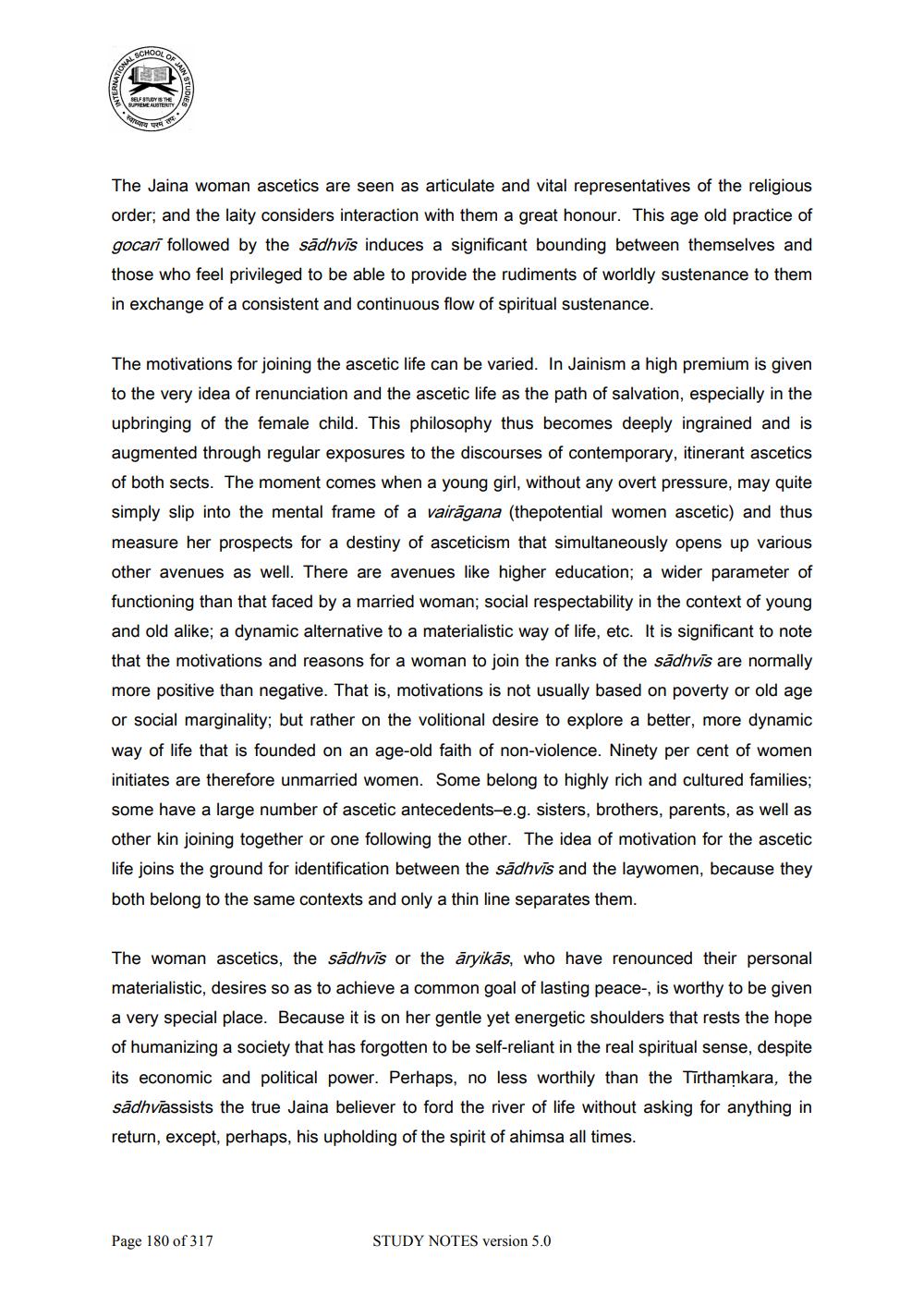________________
The Jaina woman ascetics are seen as articulate and vital representatives of the religious order, and the laity considers interaction with them a great honour. This age old practice of gocari followed by the sādhvīs induces a significant bounding between themselves and those who feel privileged to be able to provide the rudiments of worldly sustenance to them in exchange of a consistent and continuous flow of spiritual sustenance.
The motivations for joining the ascetic life can be varied. In Jainism a high premium is given to the very idea of renunciation and the ascetic life as the path of salvation, especially in the upbringing of the female child. This philosophy thus becomes deeply ingrained and is augmented through regular exposures to the discourses of contemporary, itinerant ascetics of both sects. The moment comes when a young girl, without any overt pressure, may quite simply slip into the mental frame of a vairāgana (thepotential women ascetic) and thus measure her prospects for a destiny of asceticism that simultaneously opens up various other avenues as well. There are avenues like higher education; a wider parameter of functioning than that faced by a married woman; social respectability in the context of young and old alike; a dynamic alternative to a materialistic way of life, etc. It is significant to note that the motivations and reasons for a woman to join the ranks of the sādhvīs are normally more positive than negative. That is, motivations is not usually based on poverty or old age or social marginality; but rather on the volitional desire to explore a better, more dynamic way of life that is founded on an age-old faith of non-violence. Ninety per cent of women initiates are therefore unmarried women. Some belong to highly rich and cultured families; some have a large number of ascetic antecedents-e.g. sisters, brothers, parents, as well as other kin joining together or one following the other. The idea of motivation for the ascetic life joins the ground for identification between the sādhvīs and the laywomen, because they both belong to the same contexts and only a thin line separates them.
The woman ascetics, the sādhvīs or the aryikās, who have renounced their personal materialistic, desires so as to achieve a common goal of lasting peace-, is worthy to be given a very special place. Because it is on her gentle yet energetic shoulders that rests the hope of humanizing a society that has forgotten to be self-reliant in the real spiritual sense, despite its economic and political power. Perhaps, no less worthily than the Tirthamkara, the sādhviassists the true Jaina believer to ford the river of life without asking for anything in return, except, perhaps, his upholding of the spirit of ahimsa all times.
Page 180 of 317
STUDY NOTES version 5.0




